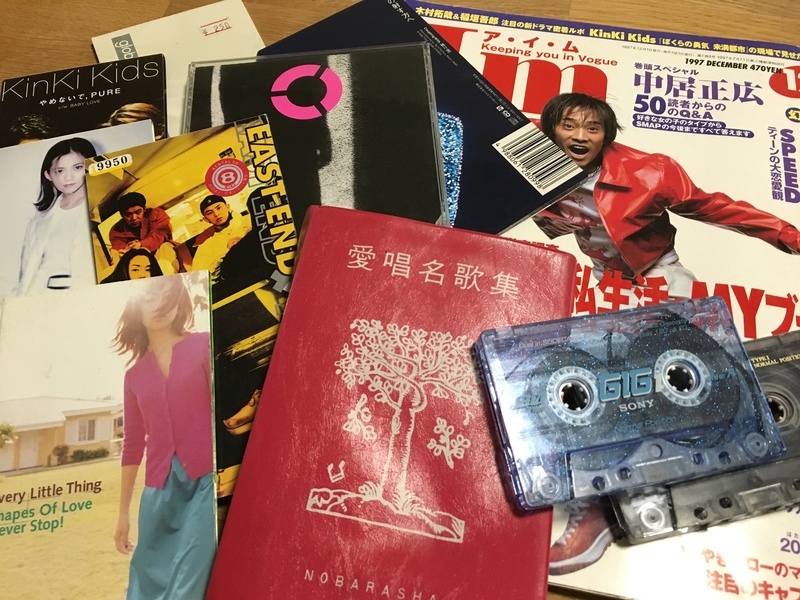Natsukashii.
That is the Japanese word that best expresses the feeling I get whenever I hear a song from “back in the day” – which, by my definition, could be as far back as my early childhood in the 1980s and ‘90s.
Certain Japanese children’s songs immediately transport my mind to some childhood memories from my summer breaks in Japan, where I spent time with my music-loving ojiichan and obaachan. We would run errands almost every day around their neighborhood in the busy city of Nagoya, walking hand-in-hand amid the muggy, sweltering climate, and singing folk songs such as Sakura and Ame Furi.
Just before the new elementary school year started, I would fly back to California with my mother. When I was eight, I became a one hit wonder with the old tape recorder, performing Medaka no gakkou only once - and that was the end of my singing career. But my families on both sides of the Pacific continued to influence my music taste, with tape recordings of everything from traditional enka to the more modern Japanese pop music, and by watching performances broadcasting on the international TV station.
Each year, I asked my mother for piano lessons, but instead, she insisted that I learn how to use a computer or play a sport. Even though I was really into tennis and found new technology interesting, I never deviated from following both the top U.S. billboard hits on local radio stations and the J-pop music scene.
But one summer, my mother was diagnosed with cancer. While she was in the hospital, my father bought my first Sony Walkman to help me deal with the intense emotional roller coaster I was going through.
From then on, listening to music in general became the main source of healing for me. Whether it was a classical melody or the latest love song, music provided a medium to fine-tune expressing a wide range of emotions when I couldn’t put them into words myself.
During that time, I learned to read Japanese characters and continued to follow both the American and Japanese music charts. As a teen, I watched MTV religiously, and my collection of Japanese music and magazines grew exponentially as local Japanese shops near my house expanded their inventory of J-pop and anime. This circumstance helped further improve my language skills. At the time, I became not only a big fan of Smashing Pumpkins, Green Day, and Smash Mouth, but also B’z, SMAP, and Amuro Namie. As audio technology formats evolved from CDs to MDs to mp3s, so did my vast array of music in both English and Japanese.
Just after I graduated from university, I had the once-in-a-lifetime opportunity to teach English in Japan for a year. Up until then, J-pop seemed to be new to my English speaking coworkers, so I introduced some music to them by playing my CDs during our breaks. The reaction was mixed. Some mentioned that when English was used in the lyrics, the grammar or pronunciation was weird. I sort of agreed. But when Utada Hikaru, a New York-born J-pop singer, made her debut and smashed chart records, her bilingualism became a turning point for my coworkers. Her language ability was not an issue, and her beats were more R&B and dance, rather than bubblegum pop. My fellow teachers eventually came to the conclusion that J-pop was becoming palatable.
When I came back to California, I spent a couple years teaching at a Japanese language school on Saturdays. On occasion, I shared bits of the latest J-pop lyrics with my teenage students. This, in part, motivated them to continue learning the language, just as it did for me when I was their age.
Then, for about a decade, I fell out of touch with the latest J-pop music scene, as my life became chaotic with starting my writing career, getting married, losing grandparents, buying a place to live, changing jobs, and then, finally, having kids. I was one of the last to get married, and thus, the last one to have the first child in my generation.
While I was pregnant, I spent a lot of time reflecting on my memories with my grandparents and mother. I had often asked myself, how will I keep their memories alive and help connect my child with them? Most of my family members in North America speak primarily in English, and my husband’s family is Chinese.
However, I became determined to pass down my Japanese language skills, and decided to use the OPOL (One parent, one language) method of bilingual parenting.
Without a doubt, using only Japanese with my child has been very challenging, and I’m still a terrible singer, too.
But, on a recent visit to Japan, my toddler received an electronic songbook from my uncle. She was immediately intrigued and loves to press all the buttons to sing along.
One of her favorite songs is Ame Furi.
Natsukashii, nah.
© 2018 Judith Ichisaka




